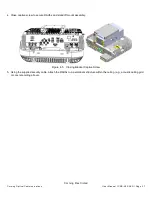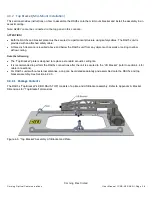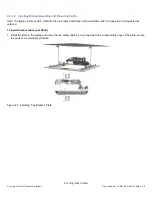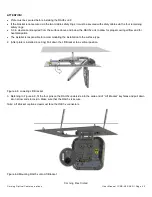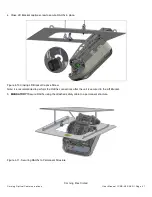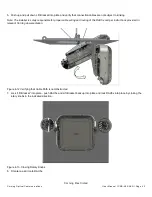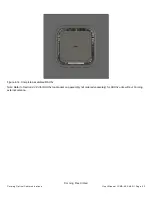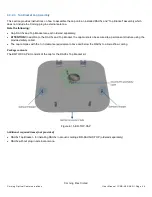
Corning Restricted
C o r n in g O pt ic a l Com m un ic at io ns
Us e r Man u al I C MA - 4 82 - A E N I P a g e 2 9
3.6 Antenna Specifications and Guidelines
Determine the antenna installation configuration, according to the transmission and coverage requirements and the
installation site conditions.
3.6.1
Authorized Antennas and Required Specifications
•
RAU5x requires external broadband antenna - can be ordered with preassembled external antenna enclosure.
•
External antennas - No limitation on any vendor of available external antennas with respect to the following requirements:
•
Omni Directional or Directional
•
Supported frequency range: wideband antennas supporting a range of 700 MHz to 2600 MHz
•
Gain: up to 12.5 dBi
•
Impedance: 50 Ohm
•
Return Loss: +12 dB
•
Number of antennas that can be connected (with cables/splitters)
– it is not recommended to connect more than one
antenna per connector since 1:1 connectivity is reduced with each split.
•
Types of couplers/splitters
– depends on number of splits (not recommended)
3.6.2
General Installation Guidelines
•
The RAU5x should be installed at a convenient location, free of metallic obstruction (can also be installed in plenum
spaces).
•
Install the RAU5x at the designated height and tune it roughly toward the service coverage area.
•
Installation of this antenna must provide a minimum separation distance of 20 cm from any personnel within the area.
•
Cable and jumper loss is at least 2 dB.
3.7 Fiber Optic Requirements
3.7.1
Authorized Optic Cables
The following specified optic cables are authorized for use with the RAU5/RAU5x:
•
Composite Plenum Tether Assemblies
•
Fiber: LC APC, 2
– 24 fibers
•
Cu: 16 AWG, 14 AWG, and 12 AWG; 2
– 12 Conductors
•
Armored, non-armored
3.7.2
Fiber Optic Rules
•
Use only or LC APC connectors
•
UniCam connectors can be used for field termination
•
Use only
fusion splice for connecting two fibers
•
Use minimum splicing/connectors to achieve minimum losses on the fibers (< 0.5 dB)
•
Use precaution while installing, bending, or connecting fiber optic cables:
•
Fiber optic cable is sensitive to excessive pulling, bending and crushing forces. Consult the cable specification sheet
for the cable you are installing.
•
Do not bend cable more sharply than the minimum recommended bend radius.
•
Do not apply more pulling force to the cable than specified.
•
Do not crush the cable or allow it to kink. Doing so may cause damage that can alter the transmission characteristics of
the cable. The cable may have to be replaced.























